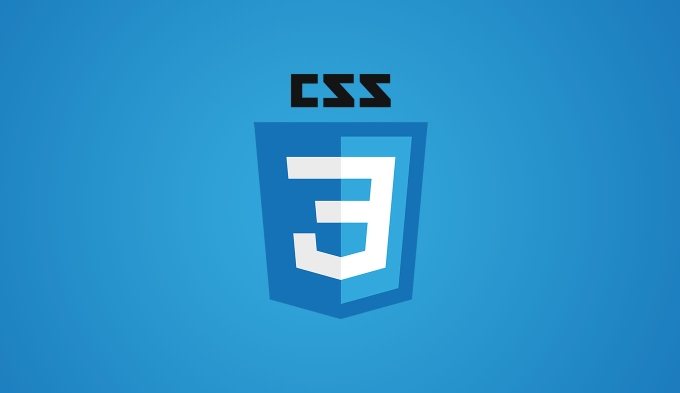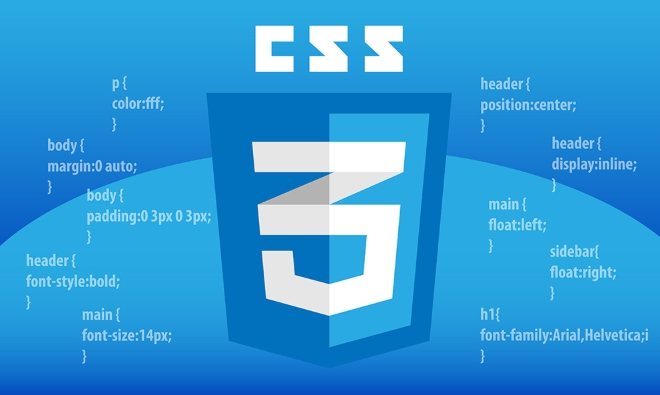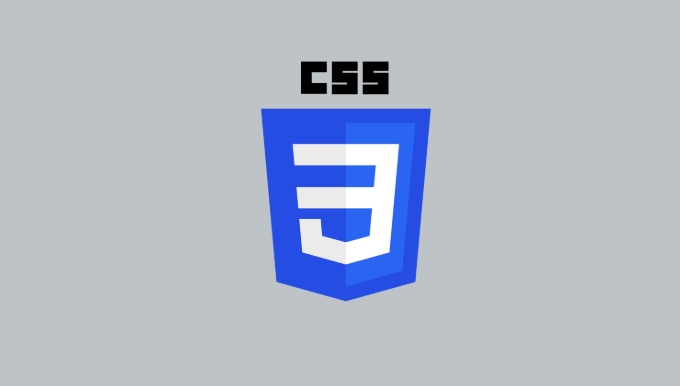 Web Front-end
Web Front-end
 CSS Tutorial
CSS Tutorial
 Understanding the difference between absolute and relative positioning in css
Understanding the difference between absolute and relative positioning in css
Understanding the difference between absolute and relative positioning in css
Jul 05, 2025 am 01:23 AMposition: relative Keeps the element in the document stream, but allows offset and can be used as a reference point for absolutely positioning child elements; position: absolute removes the element from the document stream and locates the ancestor elements based on the recent non-static positioning. 1. Use relative to fine-tune the position without affecting the layout and establish a context for the internal absolute positioning elements; 2. Use absolute to achieve positioning away from the document flow, suitable for drop-down menus, floating prompts, icon positioning and other scenarios; 3. Common usages include the relative positioning container wrapping absolute positioning sub-elements, such as text descriptions on the picture, indicator points in the tab page, and tooltips next to buttons. The combination of the two can more accurately control layout behavior.

When you're working with CSS layouts, understanding the difference between absolute and relative positioning is key to getting elements to behave the way you want. It's not just about where things sit on the page — it matters how they interact with other elements around them.

What "position: relative" really means
When you set an element to position: relative , it doesn't take the element out of the normal document flow. That means everything else still acts like the element is right where it would normally be. But here's the catch: now you can move it using top, bottom, left, or right values, and it shifts from its original spot without affecting anything else.

For example:
- If you have a paragraph and you give it
position: relative; top: 20px;, it will move down 20 pixels, but the space it originally took up stays reserved. - This is super useful when you want to tweak placement slightly without messing up your whole layout.
Also, one important detail: a relatively positioned element becomes a reference point for any absolutely positioned child elements inside it. More on that in a minute.

How "position: absolute" works in practice
Once you set something to position: absolute , it's like taking it off the grid. It no longer affects how other elements are laid out. It positions itself based on the nearest ancestor that has a position set to something other than static (like relative, absolute, fixed, or sticky). If there isn't one, it goes all the way back to the viewport.
Use cases include:
- Dropdown menus that need to pop out without pushing other content away
- Overlays or toolstips that should float above everything else
- Icons or badges that need to stick to a corner of another element
Let's say you have a div with position: relative wrapping a button. If the button is position: absolute; top: 0; right: 0; , it'll stick to the top-right corner of that container — exactly what you'd want for a close icon.
One thing to watch out for: if you forget to set a parent container to relative or absolute, the absolutely positioned element might end up somewhere unexpected, like flying off the screen or stacking weirdly with unrelated parts of the page.
When to use each one
Most of the time, you'll find yourself mixing both. A common pattern is to use relative on a parent container so that any absolutely positioned children inside it know where their boundaries are.
Here's how this plays out in real life:
- Image captions that sit over a photo? Parent gets
relative, caption usesabsoluteto pin itself to the bottom or top. - Tab navigation with indicators? The tabs themselves might be
relativeso the little dot indicator can move around absolutely within them. - Tooltips that appear next to buttons? You guessed it — button area is
relative, tooltip isabsolute.
The main takeaway is this: relative keeps things grounded while letting you nudge them. absolute breaks free and positions based on context you define. Use them together and you've got solid control over layout behavior.
Basically that's it.
The above is the detailed content of Understanding the difference between absolute and relative positioning in css. For more information, please follow other related articles on the PHP Chinese website!

Hot AI Tools

Undress AI Tool
Undress images for free

Undresser.AI Undress
AI-powered app for creating realistic nude photos

AI Clothes Remover
Online AI tool for removing clothes from photos.

Clothoff.io
AI clothes remover

Video Face Swap
Swap faces in any video effortlessly with our completely free AI face swap tool!

Hot Article

Hot Tools

Notepad++7.3.1
Easy-to-use and free code editor

SublimeText3 Chinese version
Chinese version, very easy to use

Zend Studio 13.0.1
Powerful PHP integrated development environment

Dreamweaver CS6
Visual web development tools

SublimeText3 Mac version
God-level code editing software (SublimeText3)

Hot Topics
 How can I include CSS only on some pages?
Jun 11, 2025 am 12:01 AM
How can I include CSS only on some pages?
Jun 11, 2025 am 12:01 AM
There are three ways to selectively include CSS on a specific page: 1. Inline CSS, suitable for pages that are not frequently accessed or require unique styles; 2. Load external CSS files using JavaScript conditions, suitable for situations where flexibility is required; 3. Containment on the server side, suitable for scenarios using server-side languages. This approach can optimize website performance and maintainability, but requires balance of modularity and performance.
 Flexbox vs Grid: Understanding the Key Differences in CSS Layout
Jun 10, 2025 am 12:03 AM
Flexbox vs Grid: Understanding the Key Differences in CSS Layout
Jun 10, 2025 am 12:03 AM
Flexboxisidealforone-dimensionallayouts,whileGridsuitstwo-dimensional,complexlayouts.UseFlexboxforaligningitemsinasingleaxisandGridforprecisecontroloverrowsandcolumnsinintricatedesigns.
 Creating an Auto-Closing Notification With an HTML Popover
Jun 10, 2025 am 09:45 AM
Creating an Auto-Closing Notification With an HTML Popover
Jun 10, 2025 am 09:45 AM
The HTML popover attribute transforms elements into top-layer elements that can be opened and closed with a button or JavaScript. Popovers can be dismissed a number of ways, but there is no option to auto-close them. Preethi has a technique you can u
 What is 'render-blocking CSS'?
Jun 24, 2025 am 12:42 AM
What is 'render-blocking CSS'?
Jun 24, 2025 am 12:42 AM
CSS blocks page rendering because browsers view inline and external CSS as key resources by default, especially with imported stylesheets, header large amounts of inline CSS, and unoptimized media query styles. 1. Extract critical CSS and embed it into HTML; 2. Delay loading non-critical CSS through JavaScript; 3. Use media attributes to optimize loading such as print styles; 4. Compress and merge CSS to reduce requests. It is recommended to use tools to extract key CSS, combine rel="preload" asynchronous loading, and use media delayed loading reasonably to avoid excessive splitting and complex script control.
 How to use Lotties in Figma
Jun 14, 2025 am 10:17 AM
How to use Lotties in Figma
Jun 14, 2025 am 10:17 AM
In the following tutorial, I will show you how to create Lottie animations in Figma. We'll use two colorful designs to exmplify how you can animate in Figma, and then I'll show you how to go from Figma to Lottie animations. All you need is a free Fig
 Breaking Boundaries: Building a Tangram Puzzle With (S)CSS
Jun 13, 2025 am 11:33 AM
Breaking Boundaries: Building a Tangram Puzzle With (S)CSS
Jun 13, 2025 am 11:33 AM
We put it to the test and it turns out Sass can replace JavaScript, at least when it comes to low-level logic and puzzle behavior. With nothing but maps, mixins, functions, and a whole lot of math, we managed to bring our Tangram puzzle to life, no J
 External vs. Internal CSS: What's the Best Approach?
Jun 20, 2025 am 12:45 AM
External vs. Internal CSS: What's the Best Approach?
Jun 20, 2025 am 12:45 AM
ThebestapproachforCSSdependsontheproject'sspecificneeds.Forlargerprojects,externalCSSisbetterduetomaintainabilityandreusability;forsmallerprojectsorsingle-pageapplications,internalCSSmightbemoresuitable.It'scrucialtobalanceprojectsize,performanceneed
 Does my CSS must be on lower case?
Jun 19, 2025 am 12:29 AM
Does my CSS must be on lower case?
Jun 19, 2025 am 12:29 AM
No,CSSdoesnothavetobeinlowercase.However,usinglowercaseisrecommendedfor:1)Consistencyandreadability,2)Avoidingerrorsinrelatedtechnologies,3)Potentialperformancebenefits,and4)Improvedcollaborationwithinteams.





